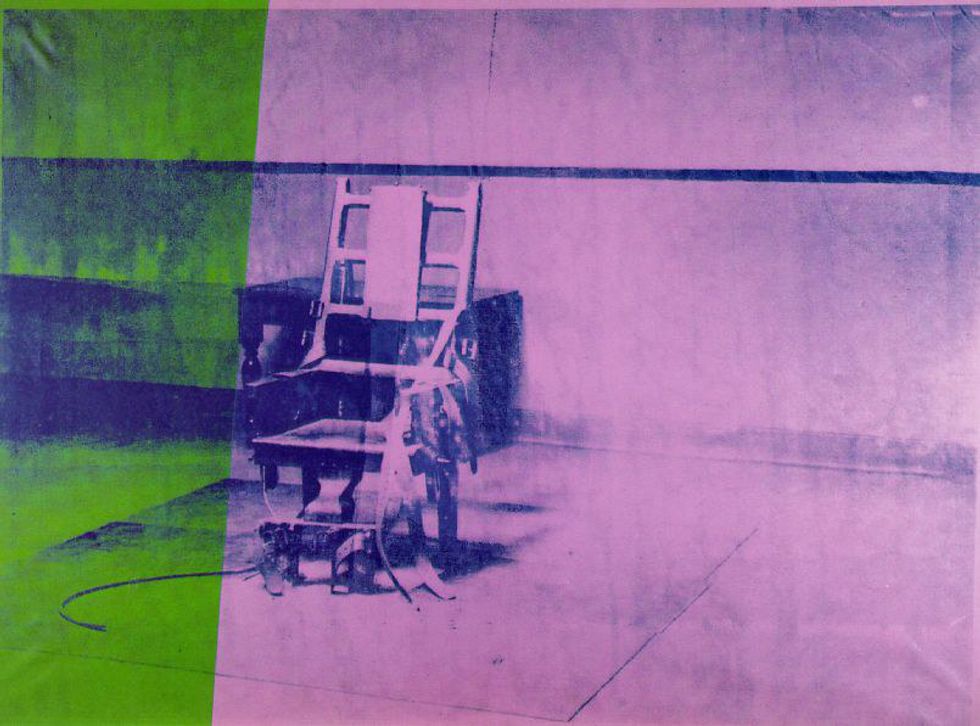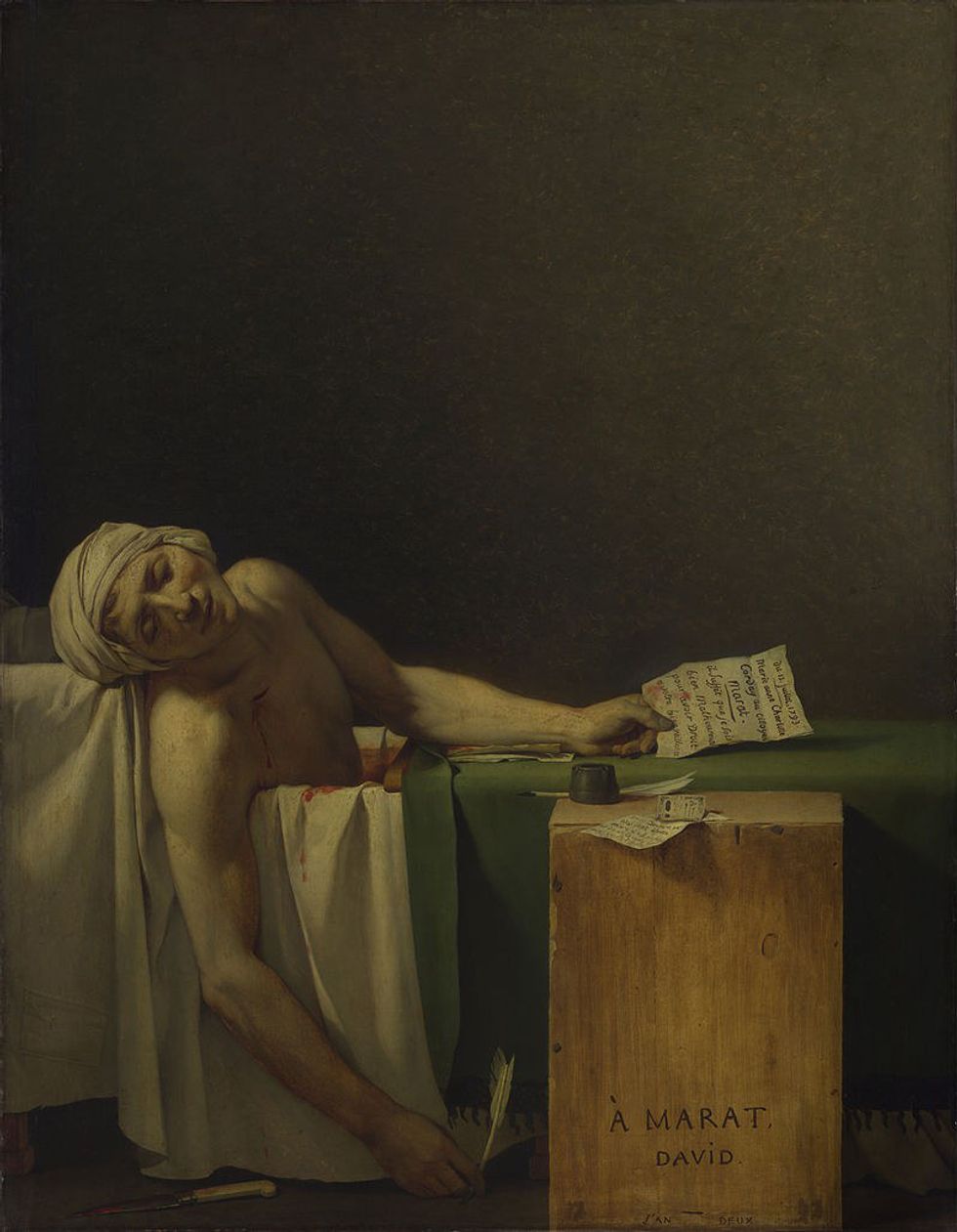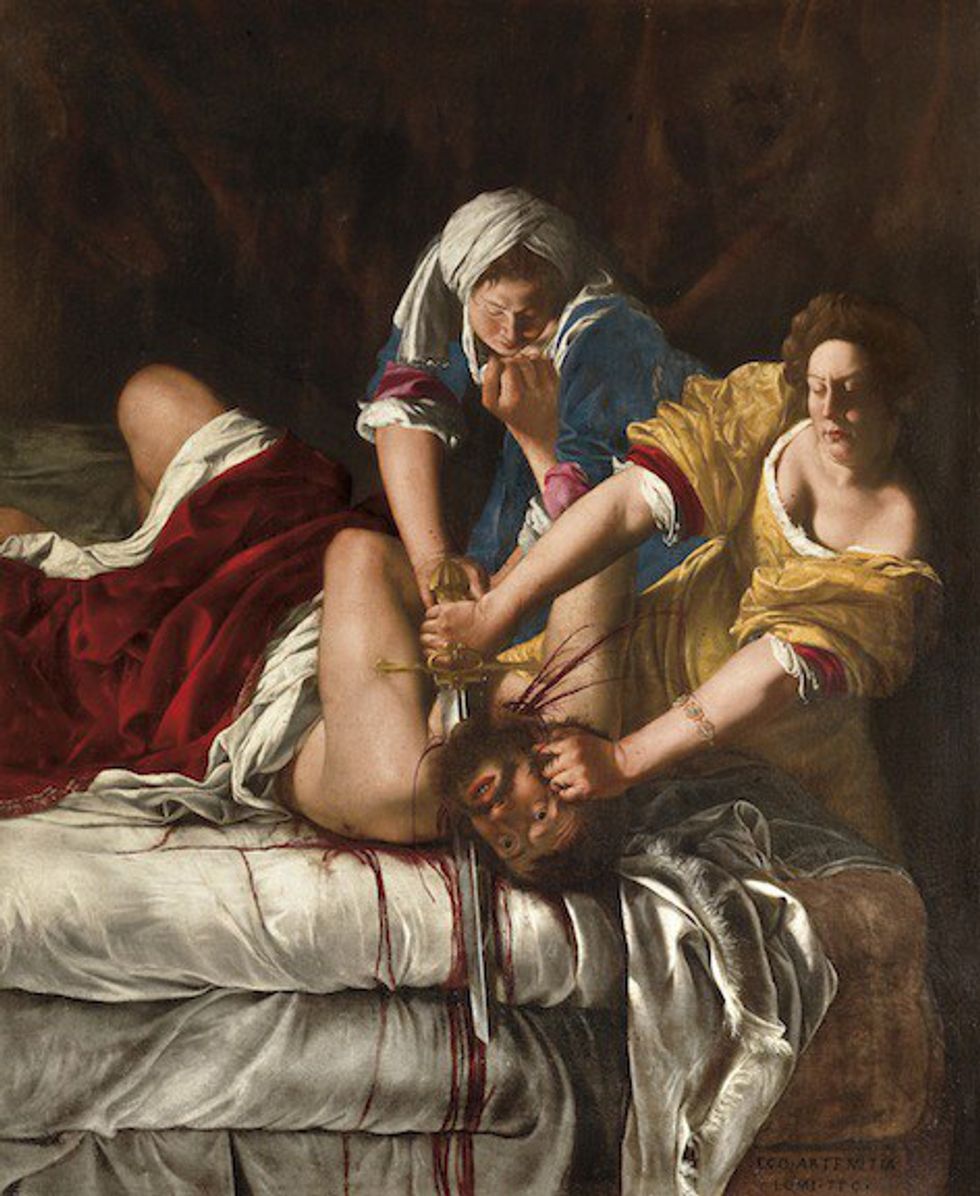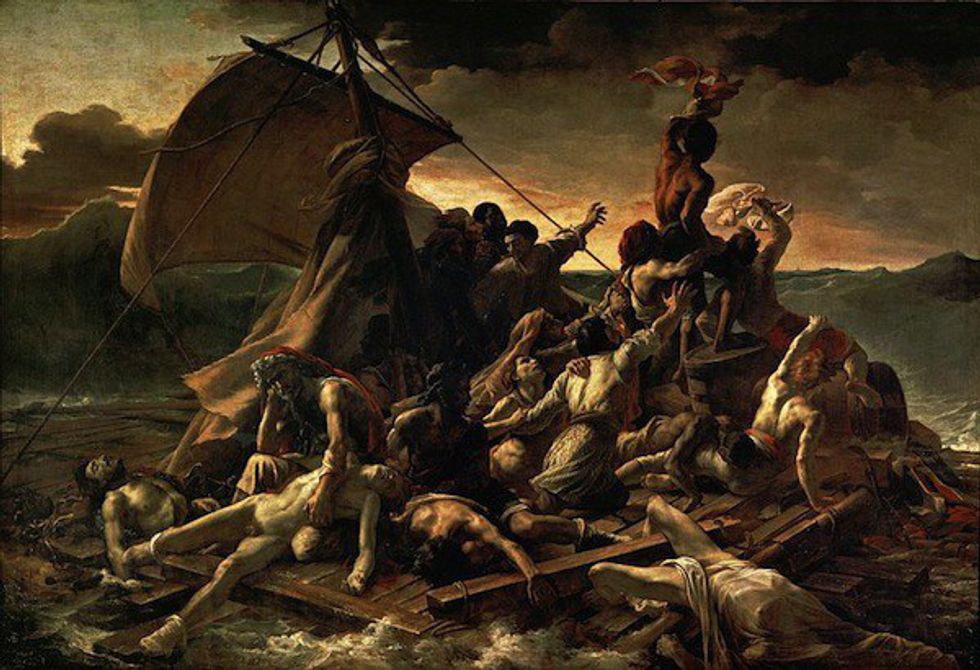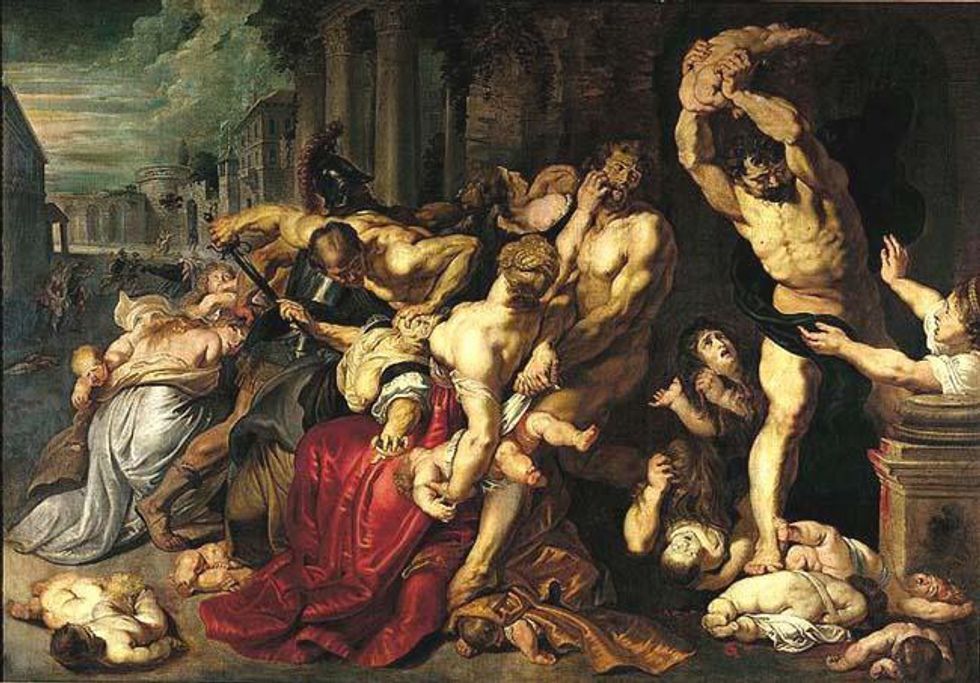As we've all heard before, art imitates life. Although this has yielded centuries of painters like Vigee Le Brun depicting their subjects in a mirror-like quality and learning how to master painting things as they are supposed to be, it can be somewhat disturbing when we see paintings depicting the grotesque. Granted, most of these pictures are as supernatural as they are eerie, but a select few are based on very real stories, and for someone who loves horror movies and Stephen King novels, this makes them all the more interesting.
1. "Big Electric Chair" - Andy Warhol
While Andy Warhol is traditionally known for his contributions to the pop art movement and his paintings of Marilyn Monroe, he painted a series of works after photographs of very real events. These ranged from photos of fatal car crashes, suicides and mental prisons. This particular painting was modeled after a picture of an electric chair in the execution chamber of Sing Sing prison, which was still in use at the time.
2. "The Death of Marat" - Jacques-Louis David
Jean-Paul Marat, pictured here lying in a bath of his own blood, was a radical French politician during the French Revolution who was stabbed in his bathtub by a woman named Charlotte Corday in 1793. Jacques-Louis David painted him the same year in an effort to bring justice to Charlotte Corday, who, being an aristocrat, had been credited for suppressing the revolution instead of murdering Marat.
3. "Judith Slaying Holofernes" - Artemisia Gentileschi
Completed in 1620 by 17-year-old Artemisia Gentileschi, this painting combines fact and fiction. The story of Judith beheading Holofernes was originally in the Old Testament of the Bible, wherein Judith and her maid snuck into the chambers of Holofernes, who was Judith's rapist, and beheaded him. Gentileschi modernized this story by applying it to her own life; modeling the figures after herself and her own rapist, who was a mentor and close family friend. After battling him in one of the first rape cases in history, her rapist walked away with no real punishment and Gentileschi produced this painting to express her journey.
4. "Raft of the Medusa" - Theodore Gericault
"Raft of the Medusa," painted by Theodore Gericault in 1818, is about as close to a real-life depiction of a horror story as you can get. The Medusa, a French ship set out to colonize Senegal when it ran aground on a reef on the West coast of Africa. When the boat crashed, most ship members survived through lifeboats, apart from the 150 who had to build a makeshift raft from the pieces of the broken ship. The first night, the crew got drunk and mutinied against the captains. By the third day, the entire crew had resorted to cannibalism. After nearly two weeks, the crew was rescued with only 15 people remaining alive. The crew of the rescuing ship recounted that when they rescued the men, the raft was littered with decomposing body parts, and some men had chunks of their own flesh missing.
5. "Massacre of the Innocents" - Peter Paul Rubens
"The Massacre of Innocents," as told in the Gospel of Mathew, features the story of King Herod's order for the soldiers to find and execute all the male babies in the town of Bethlehem. Rubens decided to highlight the violence and hatred in this event by showing babies being ripped from their mothers' arms and being murdered right before their, and the audiences', very eyes.




